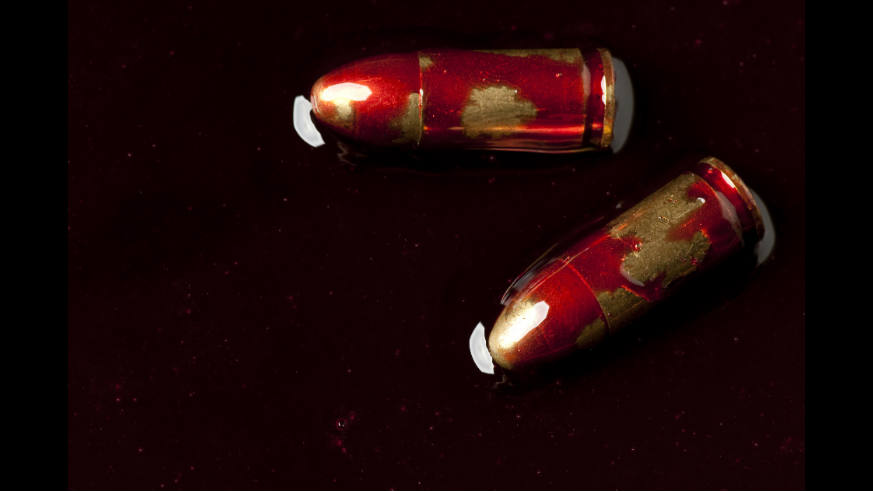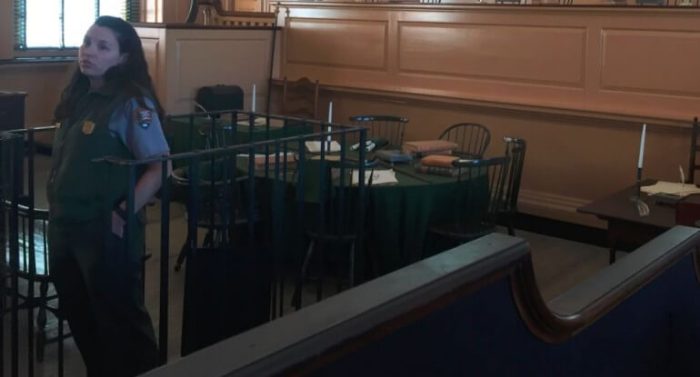President Donald Trump tweeted on Thursday that the United States should take a page from history. No. 45 (in 140 characters or less) referred to Army Gen. John Joseph “Black Jack” Pershing ending “Radical Islamic Terror” for 35 years by dipping bullets in pig’s blood when fighting Muslims in the Philippine-American War of 1899-1902… except this porcine parable never happened.
Study what General Pershing of the United States did to terrorists when caught. There was no more Radical Islamic Terror for 35 years!
— Donald J. Trump (@realDonaldTrump) August 17, 2017
Though not as glaringly false as Kellyanne Conway’s mention of the Bowling Green Massacre, this isn’t the first time Trump referred to this debunked tale.
“They were having terrorism problems, just like we do,” then-candidate Trump said during a February 2016 rally in South Carolina. “And [Pershing] caught 50 terrorists who did tremendous damage and killed many people. And he took the 50 terrorists, and he took 50 men and he dipped 50 bullets in pigs’ blood — you heard that, right? He took 50 bullets, and he dipped them in pigs’ blood. And he had his men load his rifles, and he lined up the 50 people, and they shot 49 of those people. And the 50th person, he said: ‘You go back to your people, and you tell them what happened.’ And for 25 years, there wasn’t a problem. Okay? Twenty-five years, there wasn’t a problem.”
Ignoring the fact that in the course of the year between the rally and Thursday’s tweet, the number of “Radical Islamic Terror-free” years increased by a decade per POTUS, “this is something you can read in the history books — not a lot of history books because they don’t like teaching this.”
It isn’t in history books because it’s false, as is the story that Pershing buried the bodies of Muslim fighters in graves with dead pigs.
If Snopes can’t convince you not to believe the bloody hype, PolitiFact checked with some experts and rated the legend “[Liar, Liar] Pants on Fire.”
“This story is a fabrication and has long been discredited,” said Brian McAllister Linn, a Texas A&M University historian and author of “Guardians of Empire: The U.S. Army and the Pacific, 1902-1940.” “I am amazed it is still making the rounds.”
The Philippine-American War occurred during the Moro Rebellion, which lasted from 1899 to 1913. It ended 11 years after the supposed pigs blood bullet mission. The “Moros” (ethnic Muslims who lived in the Southern Philippines) fought against foreign rule for hundreds of years and rose up against the United States when the nation claimed rule of the island.
“The Moros were fighting for a lot of reasons, not just because they were Muslims,” Lance Janda, a military historian at Cameron University, told PolitiFact. “This is another fact that gets lost in many modern discussions of terrorism.”
Another issue with the Pershing story is that it runs contrary to his character, according to historians.
“He did a lot of what we would call ‘winning hearts and minds’ and embraced reforms which helped end their resistance,” Janda explained. “He fought too, but only when he had to, and only against tribes or bands that just wouldn’t negotiate with him. He wasn’t solely committed to fighting as people like Trump who tell the pig blood story imply.”
A letter surfaced claiming Pershing, in charge of controlling territories gained during the Spanish-American War, did actually bury a Muslim’s body with the dead body of a pig, but that letter was written half a century after the alleged double burial, according to historians.
That isn’t to say that the threat of not going to heaven by exposure to swine hasn’t been tried as a deterrent when fighting Muslims, but it’s also important to note that the Moro Rebellion was not a religious war. It was a revolt against foreign occupation.
Also, as we should know today, not all people of one race, religion or creed are the same.
“The Ottomans under Sultan Abdul Hamid II sent a letter to the Sulu Moros asking them not to resist the Americans at the start of the Moro Rebellion, and the Moros on Sulu complied,” Janda added in the 2016 PolitiFact article. “It’s a nice example of diplomacy working to our advantage, and a reminder that then and now, not all Muslims or Moros are the same and that many were and are U.S. allies.”



















